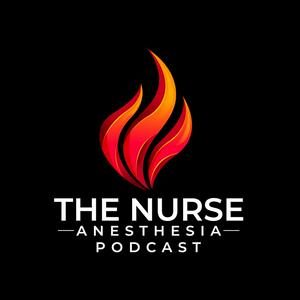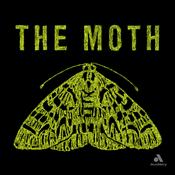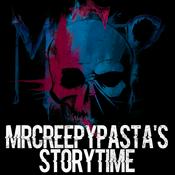40 episodes

Episode 39: Q&A Round 8 - Hypermetabolic Syndromes
16/12/2025 | 27 mins.
One of the best ways we learn is by answering questions. In this episode of The Nurse Anesthesia Podcast Jeremy and Sass cover several Hypermetabolic Syndromes in Round 8 of our Q&A format. We like to periodically host these episodes as a way to sharpen our thinking, reinforce the fundamentals, and keep our clinical decision-making strong.Answering questions about content we’ve learned in the past helps our brains develop the neural connections that makes information stick. This is active recall in action…where we not only recognize information, but retrieve it, apply it, and turn it into something we can use in the operating room.And for CRNAs, this now part of our professional lives. Through the NBCRNA’s Maintenance of Anesthesia Certification, or MAC program, we’re expected to stay engaged with our knowledge by answering anesthesia-related questions every three months as part of our recertification. So, put on those headphones and let’s get right to it!About The Nurse AnesthesiaWe provide continuing education for CRNAs and RNs. Our goal is provide the very best in anesthesia education and to build a commUNITY of learning in anesthesia and critical care!We’re seasoned educators and practicing CRNAs who know anesthesia. We literally write the textbook! We have the clinical expertise, educational experience, and practical know how to give you the most current and relevant anesthesia content available. We are here for you.For anyone who wants to learn or if you just want to review anesthesia concepts…we will set you up for a successful educational jOURney by providing short, meaningful courses to accelerate your nurse anesthesia learning, tackle your training, and become the successful CRNA you want to be. Let's do this together. It's Go Time!Visit us at www.thenurseanesthesia.com Sign up for The Nurse Anesthesia CoursesOur CRISIS MANAGEMENT SERIES is currently available! CRNAs & RN’s get CE credits when they purchase this series.Resident Registered Nurse Anesthesiologists will also find value in taking these courses!Learn more about our courses at www.thenurseanesthesia.com Follow us on Instagram @thenurseanesthesiaLegal DisclaimerThe Nurse Anesthesia Podcast is for educational and informational purposes only. It does not constitute medical. We continuously strive for accuracy, however, medicine is constantly evolving, and clinical decisions should always be made based on current guidelines, institutional policies, and individual patient considerations. The views expressed are those of the hosts and guests, and Do NOT necessarily reflect the opinions of any affiliated institutions. Listeners should consult their own healthcare providers before making any medical decisions. Music by Alex Grohl

Episode 38: Anesthesia Management for a Pheochromocytoma
01/12/2025 | 28 mins.
Sass and Jeremy talk about the preparation and perioperative management of a patient who requires the removal of a pheochromocytoma. They discuss the important preoperative optimization that’s required to appropriately care for these patients, and what you can do if you ever experience an unexpected pheochromocytoma during the anesthetic care of your patients.References1. Elisha S. “Anesthesia Case Management for Excision of a Pheochromocytoma.” Case Studies in Nurse Anesthesia. 1st ed. Elsevier, 2021.2. Elisha S. “The Endocrine System and Anesthesia.” In Elisha S, Heiner JS, Nagelhout JJ. Nurse Anesthesia. 7th ed. Elsevier 2023.3. Fagundes GFC, Almeida MQ. Perioperative Management of Pheochromocytomas and Sympathetic Paragangliomas. J Endocr Soc. 2022;6(2):bvac004. Published 2022 Jan 14. doi:10.1210/jendso/bvac004 4. Kamath AS, Singh K. Perioperative Management of Pheochromocytoma. [Updated 2023 Jul 6]. In: StatPearls [Internet]. Treasure Island (FL): StatPearls Publishing; 2025 Jan-. About The Nurse AnesthesiaWe provide continuing education for CRNAs and RNs. Our goal is provide the very best in anesthesia education, and to build a commUNITY of learning in anesthesia and critical care!We’re seasoned educators and practicing CRNAs who know anesthesia. We literally write the textbook! We have the clinical expertise, educational experience, and practical know how to give you the most current and relevant anesthesia content available. We are here for you.For anyone who wants to learn, or if you just want to review anesthesia concepts…we will set you up for a successful educational jOURney by providing short, meaningful courses to accelerate your nurse anesthesia learning, tackle your training, and become the successful CRNA you want to be. Let's do this together. It's Go Time! Visit us at www.thenurseanesthesia.com Sign up for The Nurse Anesthesia CoursesOur CRISIS MANAGEMENT SERIES is currently available! CRNAs & RN’s get CE credits when they purchase this series.Resident Registered Nurse Anesthesiologists will absolutely find value in taking these courses!Learn more about our courses at www.thenurseanesthesia.com Follow us on Instagram @thenurseanesthesiaLegal DisclaimerThe Nurse Anesthesia Podcastis for educational and informational purposes only. It does not constitute medical. We continuously strive for accuracy, however, medicine is constantly evolving, and clinical decisions should always be made based on current guidelines, institutional policies, and individual patient considerations. The views expressed are those of the hosts and guests, and Do NOT necessarily reflect the opinions of any affiliated institutions. Listeners should consult their own healthcare providers before making any medical decisions. Music by Alex Grohl

Episode 37: The Ultrasound-Guided Anesthesia Nerve Blocks Every CRNA Should Know with Nicolette Hooge & Christian Falyar
17/11/2025 | 1h 25 mins.
In this episode of the Nurse Anesthesia Podcast, Jeremy sits down with two SUPERSTAR ultrasound and acute pain management educators…Nicolette Hooge, DNP, CRNA, FAANA and Christian Falyar, DNAP, CRNA, FAANA from the Middle Tennessee School of Anesthesia. They talk about the core ultrasound-guided anesthesia nerve blocks that every CRNA should learn and have available as part of their skill set for anesthesia practice. If you’re interested in peripheral nerve blocks and ultrasound-guided regional anesthesia…this is an amazing conversation with so many gems and take-aways…you absolutely will want to listen! Resources/information discussed in podcast1. Acute Surgical Pain Management Fellowship at Middle Tennessee School of Anesthesia at this link: https://mtsa.edu/admissions/fellowship/2. Nurse Anesthesia 7th edition About The Nurse AnesthesiaWe provide continuing education for CRNAs and RNs, and our goal is to build a commUNITY of learning in anesthesia and critical care! We’re seasoned educators and clinicians who know anesthesia. We literally write the textbook! We have the clinical expertise, educational experience, and practical know how to give you the most current and relevant anesthesia content available. Let's do this together. It's Go Time!Sign up for The Nurse Anesthesia CoursesOur CRISIS MANAGEMENT SERIES is currently available! CRNAs & RN’s get CE credits when they purchase this series.Learn more about it at www.thenurseanesthesia.com Follow us on Instagram @thenurseanesthesia Legal DisclaimerThe Nurse Anesthesia Podcastis for educational and informational purposes only. It does not constitute medical. We continuously strive for accuracy, however, medicine is constantly evolving, and clinical decisions should always be made based on current guidelines, institutional policies, and individual patient considerations. The views expressed are those of the hosts and guests, and Do NOT necessarily reflect the opinions of any affiliated institutions. Listeners should consult their own healthcare providers before making any medical decisions. Music by Alex Grohl

Episode 36:Ultrasound and Pain Management Education in Nurse Anesthesia with Christian Falyar & Nicolette Hooge
03/11/2025 | 1h 8 mins.
Our guests in this episode are Christian Falyar, DNAP, CRNA, FAANA and Nicolette Hooge, DNP, CRNA, FAANA from the Middle Tennessee School of Anesthesia. They are some of the top educators of regional anesthesia in the country, and direct the only Acute Surgical Pain Management Fellowship for CRNAs. They literally are the rock stars of regional anesthesia! Jeremy had the opportunity to sit down with them and talk about the state of the state regarding ultrasound-guided regional anesthesia education. You can find more information about them and the Acute Surgical Pain Management Fellowship at Middle Tennessee School of Anesthesia at this link: https://mtsa.edu/admissions/fellowship/ References1. Nurse Anesthesia 7th edition About The Nurse AnesthesiaWe provide continuing education for CRNAs and RNs, and our goal is to build a commUNITY of learning in anesthesia and critical care! We’re seasoned educators and clinicians who know anesthesia. We literally write the textbook! We have the clinical expertise, educational experience, and practical know how to give you the most current and relevant anesthesia content available. Let's do this together. It's Go Time! Sign up for The Nurse Anesthesia CoursesOur CRISIS MANAGEMENT SERIES is currently available! CRNAs and RN’s get CE credits when they purchase this series.Learn more about it at www.thenurseanesthesia.com Follow us on Instagram @thenurseanesthesia Legal DisclaimerThe Nurse Anesthesia Podcastis for educational and informational purposes only. It does not constitute medical. We continuously strive for accuracy, however, medicine is constantly evolving, and clinical decisions should always be made based on current guidelines, institutional policies, and individual patient considerations. The views expressed are those of the hosts and guests, and Do NOT necessarily reflect the opinions of any affiliated institutions. Listeners should consult their own healthcare providers before making any medical decisions. Music by Alex Grohl Mixed & Edited by Next Day [email protected]

Episode 35: The VIFI Technique for Intubation
27/10/2025 | 25 mins.
In this episode Jeremy talks about a powerful dual-technique for intubation that blends two modern airway tools — the video laryngoscope and the single-use flexible intubating scope — into a single, coordinated approach.He calls this method Videolaryngoscopy Including Flexible Intubation, or VIFI. This airway technique combines the visibility of the videolaryngoscope with the precision of the flexible intubating scope. During this episode Jeremy talks about some patient conditions and situations where VIFI may be useful as well as a step-by-step description on how to perform this technique. This is one you definitely should check out! References1. Hu, Hui-Zhong et al. “A visual laryngoscope combined with a fiberoptic bronchoscope improves intubation outcomes in patients with predicted difficult airways in thoracic surgery.” BMC pulmonary medicine vol. 24,1 558. 7 Nov. 2024, doi:10.1186/s12890-024-03369-z2. Ottoveggio, Gaetano et al. “Combined videolaryngoscope and fiberoptic intubation for difficult airways in head and neck surgery: A prospective observational study.” Current problems in surgery vol. 70 (2025): 101852. doi:10.1016/j.cpsurg.2025.1018523. Strayer RJ, Caputo N. “How to Use Video-Assisted Flexible Endoscopic Intubation.” ACEP Now: The Official Voice of Emergency Medicine. November 11, 2022. https://www.acepnow.com/article/how-to-use-video-assisted-flexible-endoscopic-intubation/?singlepage=14. Stein, M L et al. “Efficacy of a hybrid technique of simultaneous videolaryngoscopy with flexible bronchoscopy in children with difficult direct laryngoscopy in the Pediatric Difficult Intubation Registry.” Anaesthesia vol. 78,9 (2023): 1093-1101. doi:10.1111/anae.16049 About The Nurse AnesthesiaWe provide continuing education for CRNAs and Nurses which the goal of building a commUNITY of learning in anesthesia and critical care! We’re seasoned educators and clinicians who know anesthesia. We literally write the textbook! We have the clinical expertise, educational experience, practical know how to give you the most current and relevant anesthesia content available. We’re here for you!For anyone who wants to learn or if you just review anesthesia concepts…we will set you up for a successful educational jOURney by providing short, meaningful courses to accelerate your nurse anesthesia learning, tackle your training, and become the successful CRNA you want to be. Let's do this together. It's Go Time! Sign up for The Nurse Anesthesia CoursesOur CRISIS MANAGEMENT SERIES is currently available! CRNAs and RNs get CE credits when they purchase this series.Learn more about it at www.thenurseanesthesia.com Follow us on Instagram @thenurseanesthesia Legal DisclaimerThe Nurse Anesthesia Podcast is for educational and informational purposes only. It does not constitute medical or professional advice. While we strive for accuracy, medicine is constantly evolving, and clinical decisions should always be made based on current guidelines, institutional policies, and individual patient considerations. The views expressed are those of the hosts and guests, and Do NOT necessarily reflect the opinions of any affiliated institutions. Listeners should consult their own healthcare providers before making any medical decisions. Music by Alex Grohl Mixed & Edited by Next Day [email protected]
More Arts podcasts
Trending Arts podcasts
About The Nurse Anesthesia Podcast
Listen to The Nurse Anesthesia Podcast, This Life of Mine with James Corden and many other podcasts from around the world with the radio.net app

Get the free radio.net app
- Stations and podcasts to bookmark
- Stream via Wi-Fi or Bluetooth
- Supports Carplay & Android Auto
- Many other app features
Get the free radio.net app
- Stations and podcasts to bookmark
- Stream via Wi-Fi or Bluetooth
- Supports Carplay & Android Auto
- Many other app features


The Nurse Anesthesia Podcast
download the app,
start listening.




































